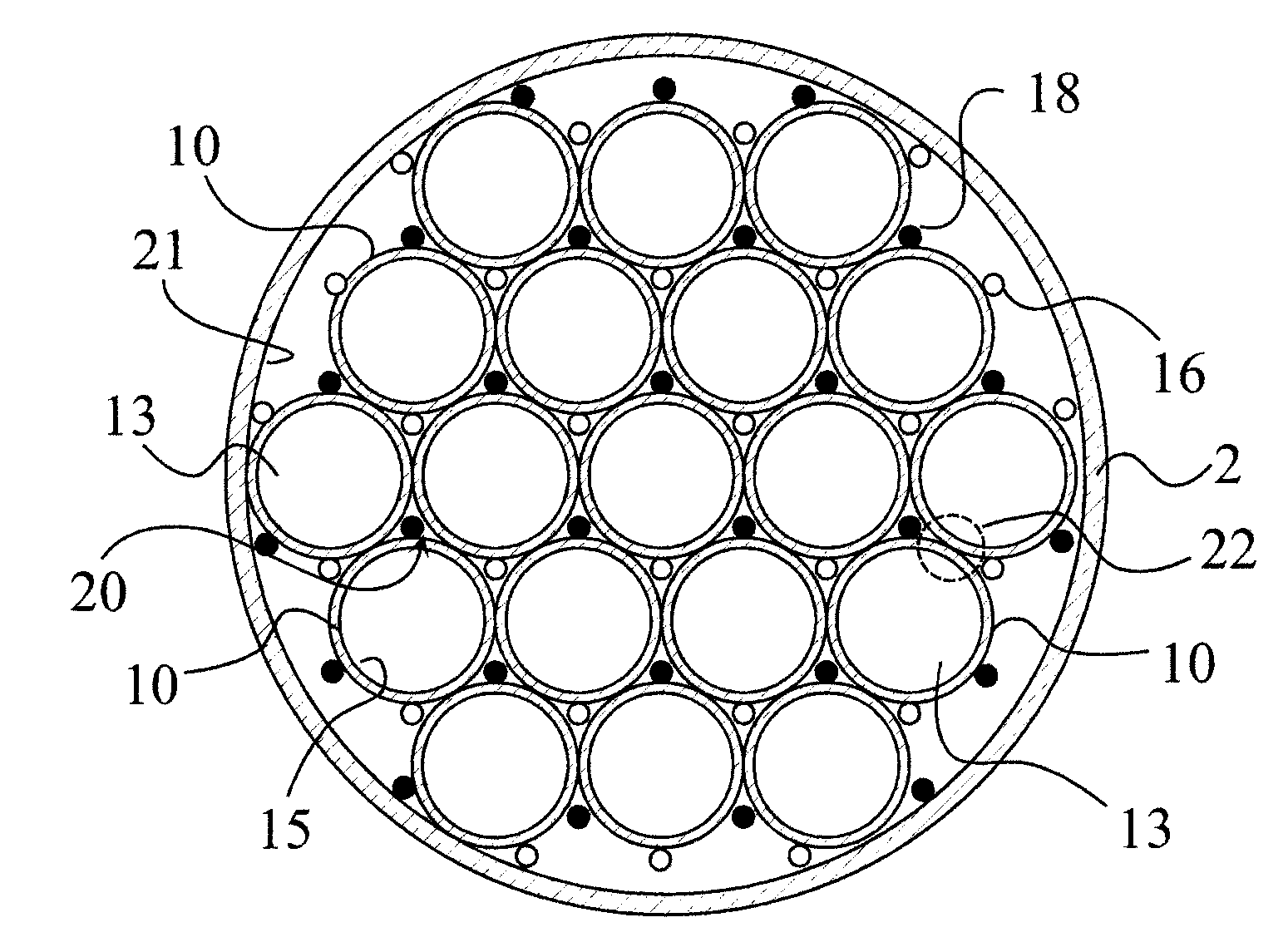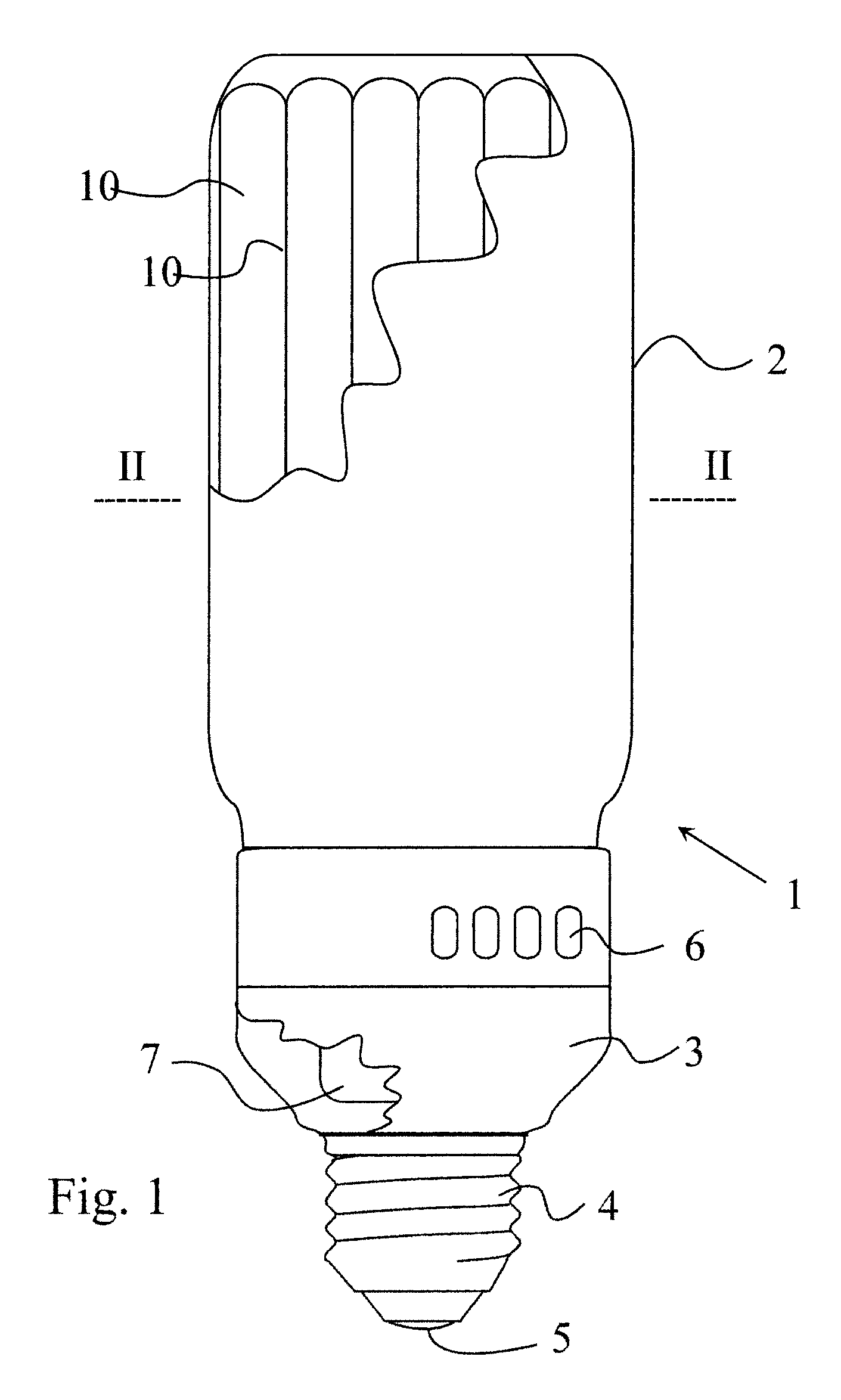Dielectric barrier discharge lamp
a discharge lamp and dielectric barrier technology, applied in the direction of gas discharge lamp details, electric discharge tubes, electrical equipment, etc., can solve the problems of prone to deterioration, electrode configuration does not provide a sufficiently homogenous light, and the planar lamp configuration cannot be used in the majority of existing lamp sockets and lamp housings, etc., to achieve uniform and homogenous discharge, equal size and shape, and good efficiency
- Summary
- Abstract
- Description
- Claims
- Application Information
AI Technical Summary
Benefits of technology
Problems solved by technology
Method used
Image
Examples
Embodiment Construction
[0021]Referring now to FIG. 1, there is shown a low pressure discharge lamp 1. The lamp is a dielectric barrier discharge lamp (hereinafter also referred to as DBD lamp), with an external envelope 2 enclosing a plurality of discharge vessels 10. In the shown embodiment the external envelope 2 is substantially cylindrical, as well as the discharge vessels 10. The discharge vessels 10 and the external envelope 2 are mechanically supported by a lamp base 3, which also holds the contact terminals 4,5 of the lamp 1, corresponding to a standard screw-in socket. The lamp base also houses an AC power source 7, illustrated only schematically. The AC power source 7 is of a known type, which delivers an AC voltage of 1-5 kV with 50-200 kHz AC frequency, and need not be explained in more detail. The operation principles of power sources for DBD lamps are disclosed, for example, in U.S. Pat. No. 5,604,410. As shown in the embodiment of FIG. 1, ventilation slots 6 may be also provided on the lamp...
PUM
 Login to View More
Login to View More Abstract
Description
Claims
Application Information
 Login to View More
Login to View More - R&D
- Intellectual Property
- Life Sciences
- Materials
- Tech Scout
- Unparalleled Data Quality
- Higher Quality Content
- 60% Fewer Hallucinations
Browse by: Latest US Patents, China's latest patents, Technical Efficacy Thesaurus, Application Domain, Technology Topic, Popular Technical Reports.
© 2025 PatSnap. All rights reserved.Legal|Privacy policy|Modern Slavery Act Transparency Statement|Sitemap|About US| Contact US: help@patsnap.com



